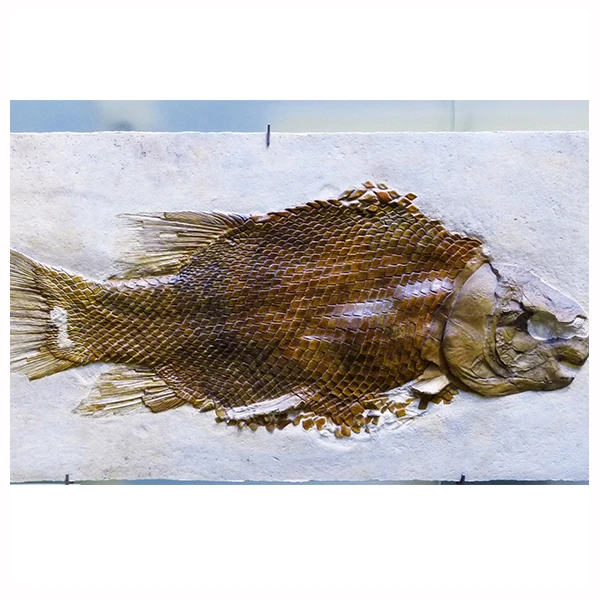New Research Says Ancient Fish Saw in Color

Sometimes new research can shed light on ancient mysteries, often answering important scientific questions that have long evaded discovery. When it comes to learning about the abilities of creatures long extinct there is usually a significant amount of speculation and theory since much of the fossil and physical evidence has deteriorated. Every once in a while a particularly well preserved fossil holds the key to a major discovery, which is what occurred recently when paleontologists stumbled onto a startling discovery that promises to explain much about the evolution of vision.
A fossil of a fish thought to have lived over 300 million years ago was recently recovered from the United States from a dig in Kansas known for producing strong fossil evidence. This fossil was then shipped over for study to the National Museum of Nature and Science in Tokyo. The fish is thought to be an Acanthodes bridgei, one of the common ancestors of modern jawed fishes like sharks and barracudas. The fossil is unusually well preserved as a number of soft tissues which usually degrade relatively quickly were still intact. Some of these soft tissues happened to be ocular tissue which yielded the surprising discovery of both rods and cone cells present in the eyes of this species.
Rods and cones line the retinas in our eyes and assist with our vision. Rods are long and thin cells that enable us to see at night, while cones enable us to differentiate colors. Both of these cells rely on the presence of pigments in order to enable us to view colors. Not only were these cells present in this fossil sample, but a pigment found in eyes called melanin was also discovered in the tissue.
With these cells present in this fossil it confirms that ancient fish ancestors used to see in color! This provides a confirmed point in the evolutionary chain which tells researchers that color vision in marine life was possible and developed. Additionally, the cells under scrutiny will allow other researchers and paleontologists to extrapolate additional information about the kind of vision present in other prehistoric creatures like dinosaurs.
Mervin Woo is currently the Sales Manager for Konica Minolta Sensing Singapore Pte Ltd. Mervin graduated from The Royal Melbourne Institute of Technology (RMIT University) and joined Konica Minolta (previously known as Minolta Singapore Pte Ltd) in 1996. With over 17 years’ experience in the field of light and colour instrumentation industry, Mervin has been invited to give talks in several conferences and seminars on light and colour management, jointly organised by various industry associations, such as Society of Information Display (Singapore and Malaysia Chapter), and International Commission on Illumination (CIE), Malaysia. He has also written an educational handbook, The Language of Light, which explains basic concepts in photometry and colorimetry. This handbook also gives an overview on photometric and colorimetric instrumentations and addresses important considerations on instrument’s selection.

